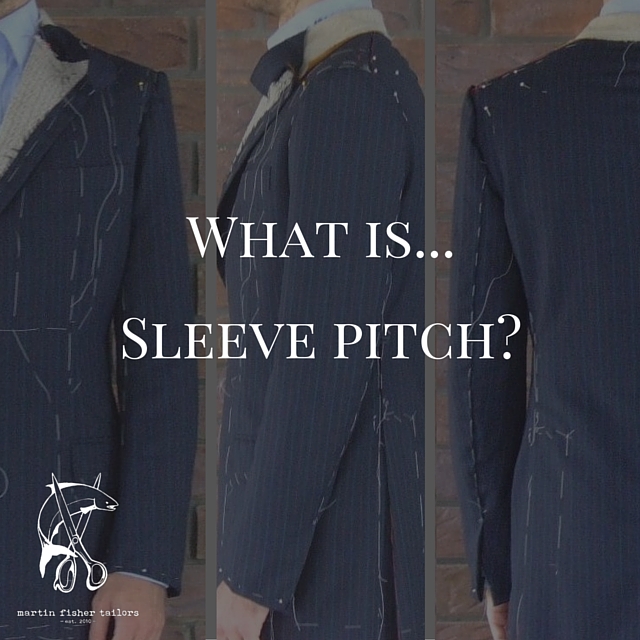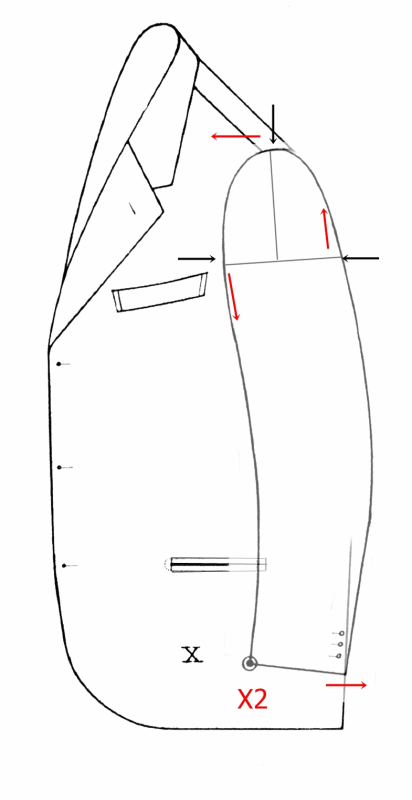What is Wednesday – sleeve pitch.
This weekly Wednesday post is aimed at answering some of the more basic and critical aspects of tailoring and the terminology we use to describe them. It stems from realizing that I’m constantly throwing out different terms with my clients and quite often they’re unsure as to what I exactly mean. The goal of this section then is to alleviate this terminology gap and provide you with some know-how to talk tailoring with a little more ease.
What is…sleeve pitch?
The sleeve pitch refers to the angle that the sleeve is attached at the armhole; the chosen position and angle being based on the wearer’s natural arm position. In the image below we can see the results of perfect sleeve pitch; notice there is absolutely no pulling or twisting in the sleeve as it is smoothly follows the natural arm position of the wearer.
The good news is that in general the majority of people hold their arms at relatively the same angle as we see above; the shoulders are neutral with the hands resting at ease just behind the hips. That said there are different postures that influence where the arms are naturally held and thus the angle with which we need to set the sleeve itself. In the case of an erect posture the shoulders are held back; the result is the arms hang at an angle that finishes closer to the seat. Conversely those who work at computers all day tend to have a forward posture with shoulders rolled the front; the result being the arms are held at an angle that finishes closer to the front of the body.
In essence there are three positions – standard, forward and back. What occurs is the sleeve is rotated either forwards or backwards to change the angle. Below is a fantastic animated diagram from Style Forum’s Tailorgod that shows exactly what happens as this rotation occurs.
In this diagram X refers to the standard neutral position. Notice the arrow pointing down at the top of the sleeve when it is in the neutral position; this is the base point for the rotation. In X2 that point is rotated slightly forward; the result being the pitch of the sleeve shifts to an angle that falls back towards the wearer’s seat. Conversely in X3 the top is rotated slightly to the back; the result is of course the opposite as the sleeve falls on a forward pitch that ends closer to the front hips. Keep in mind these changes are to mimic the wearer’s arm angle and thus achieve a clean line in the sleeve void of any pulling or twisting.
Makes sense? Again this is a slightly technical post but one that is critical to having a beautifully set sleeve which is one of the key hallmarks to a jacket. As always please don’t hesitate to get in touch if you have any questions. Better yet book a free appointment and we can banter in person and see if we might be a good fit to work together.
Take care – Michael
info@martinfishertailors.com







